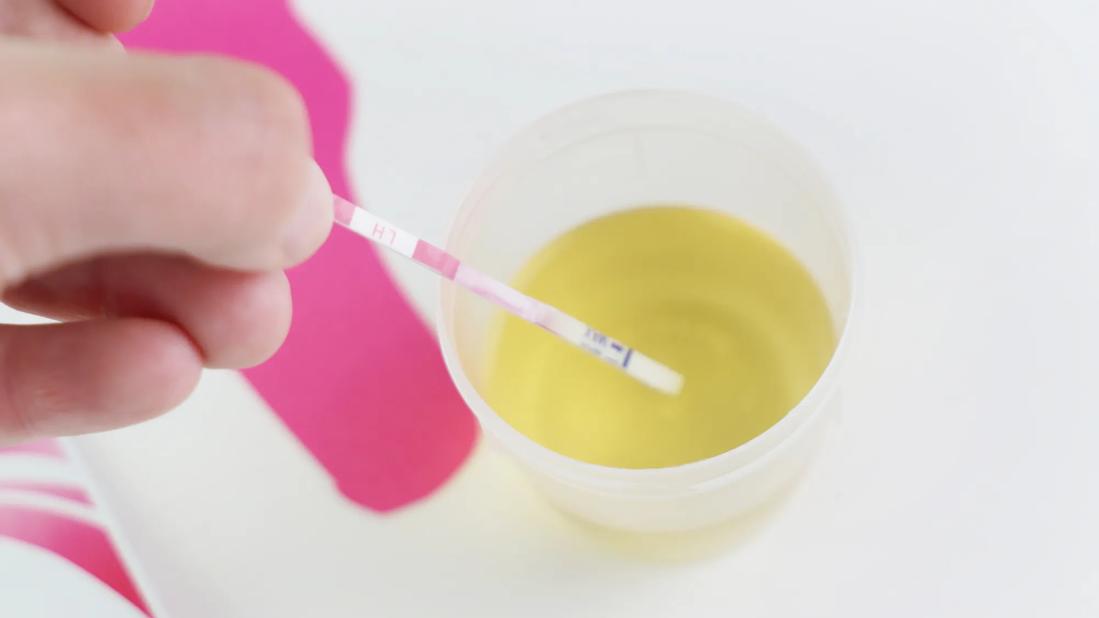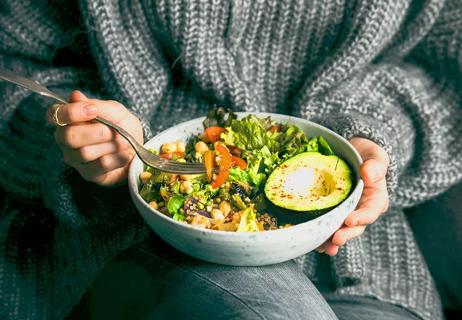These over-the-counter kits are 99% effective at identifying when you’re most fertile each month

So, you want to have a baby. Where to start? It’s not always as easy as it seems. But Ob/Gyn Erica Newlin, MD, says ovulation test strips may be able to help.
Advertisement
Cleveland Clinic is a non-profit academic medical center. Advertising on our site helps support our mission. We do not endorse non-Cleveland Clinic products or services. Policy
Ovulation predictor kits (OPKs) tell you when your body is most fertile. This helps you figure out when to have sex for the best chances of getting pregnant.
“Especially if you’re struggling to get pregnant, you may want to consider ovulation predictor kits,” Dr. Newlin says. “They can help you determine the right timing for intercourse.”
There are many types of ovulation tests, including some with digital displays. But analog versions — small paper strips about the length of a pinkie finger — work just as well. No matter what type you use, the gist is the same: You dip the ovulation strip in your urine and wait for a reading. (More on the specifics in a moment!)
Ovulation strips assess the level of luteinizing hormone (LH) in your urine. Your body produces this hormone to stimulate your ovaries, which triggers them to release an egg. This is called ovulation.
And that’s where OPKs can come in handy.
“Your LH level rises in the 24 to 48 hours before you ovulate,” Dr. Newlin explains. “It’s during this surge that your body is most fertile. That’s when you should be having sex to maximize your chances of getting pregnant.”
OPKs can also be helpful if you’re trying to get pregnant via intrauterine insemination (IUI).
Advertisement
Studies show that ovulation strips are up to 99% effective in helping you figure out when you’re most fertile. Why does this matter? Because each month, there’s only a small window of time when you can get pregnant. This is known as your “fertile window.”
Once an egg ovulates, its lifespan is short — just about 24 hours. You want to know when it’s going to happen so you can have sex at the right time to try to conceive.
While an egg’s lifespan is only 24 hours, male sperm has a slightly longer lifespan, which means you have longer than a one-day timeframe to work with.
Sperm (which is found in semen) can survive in your body for about 72 hours. So, if you have sex or inseminate yourself before you ovulate, that sperm will be ready and waiting once an egg becomes available.
OPKs tell you when that should happen.
“In addition to telling you when your LH levels are surging, ovulation strips also clue you into the fact that a surge is coming,” Dr. Newlin further explains. “So, you have a couple of days to have intercourse before the egg is actually released.”
OPKs can help you understand:
“Ovulation predictor kits may be particularly helpful if you don’t have regular cycles, or if you have longer cycles due to a disorder like PCOS,” Dr. Newlin points out. “They can help you determine the timing of ovulation, which will be different from the standard 28-day cycle.”
But using ovulation strips isn’t a guarantee of pregnancy. They’re just a tool to help you understand when you have the highest likelihood of becoming pregnant. OPK strips can’t tell you:
There are a few things you need to know before you start using ovulation testing strips.
Advertisement
So, how do you use OPKs? Again, each product is different, but basically, it’s usually something like this:
Once you’ve ovulated, your strip will go back to showing just one line. If you’re not pregnant, expect your period to come within the next two weeks, and then the cycle will start again.
Using ovulation predictor kits can help you better understand trends in your menstrual cycle — and even identify areas of concern.
Advertisement
“If you don’t ovulate, your ovulation kit will not turn positive,” Dr. Newlin says. “If you never see two lines on your ovulation strips, make a doctor’s appointment to further explore any fertility issues.”
When you’re trying to conceive, the rule of thumb is to give yourself at least a year to get pregnant if you’re under age 35 and ovulating regularly. But contact a healthcare provider with any concerns you might have along the way.
“If you have irregular menstrual cycles, or you have questions about using OPKs, or you’re just confused or worried, make an appointment with your provider,” Dr. Newlin urges. “We can talk you through it.”
Advertisement
Learn more about our editorial process.
Advertisement

When you’re living with this chronic condition, early diagnosis and treatment can improve your chances of getting pregnant down the road

Start having sex about 72 hours before ovulation, then at least every other day during your fertile window

Cancer and its treatments can cause infertility, but you have many options for fertility preservation

You can keep track of your menstrual cycle to help identify your most fertile days

Specific foods won’t really affect fertility, but a healthy weight and nutritious diet are helpful

Yes, you can pee with a tampon in; no, they won’t stretch out your vagina or make cramps worse!

Estrogen loss contributes to bone loss, which significantly raises your risk of osteopenia and osteoporosis

The little blue pill might help with physical arousal, but there are better treatments for low libido in women

Start having sex about 72 hours before ovulation, then at least every other day during your fertile window

Attachment theory suggests that your earliest relationships shape connections throughout your life

It isn’t a recognized mental health disorder, but research shows that problematic social media use can negatively affect your mental health, self-esteem and sleep